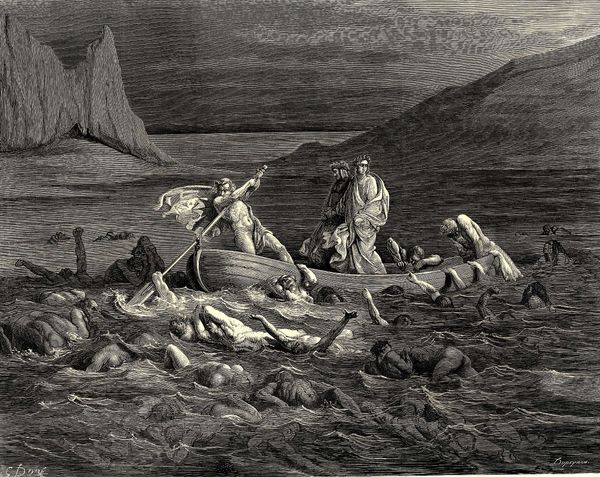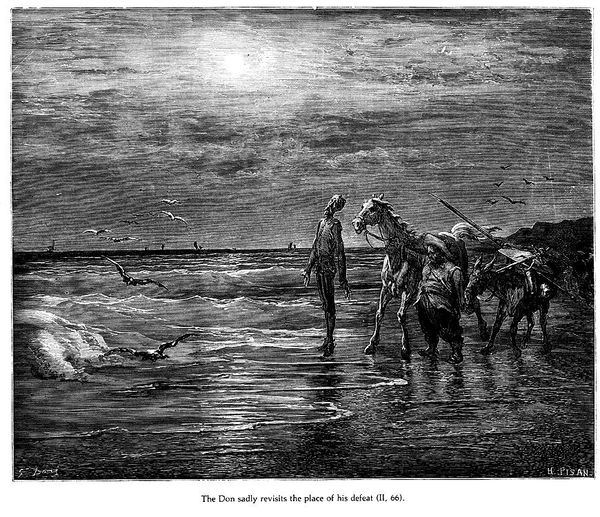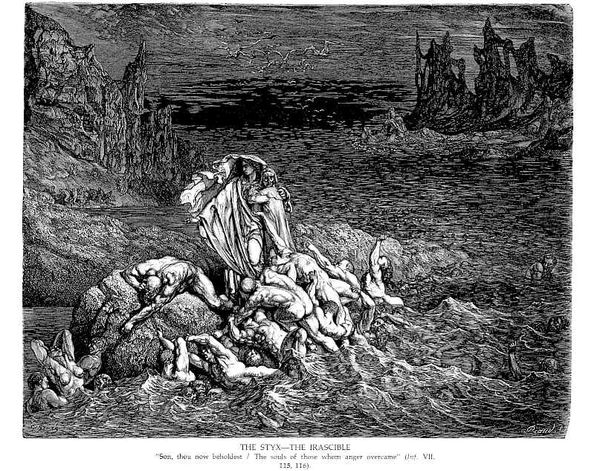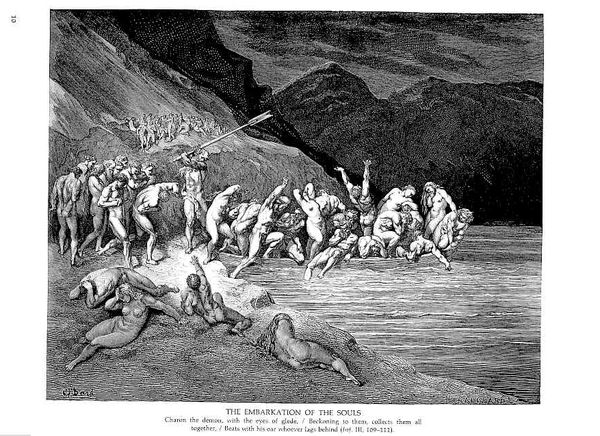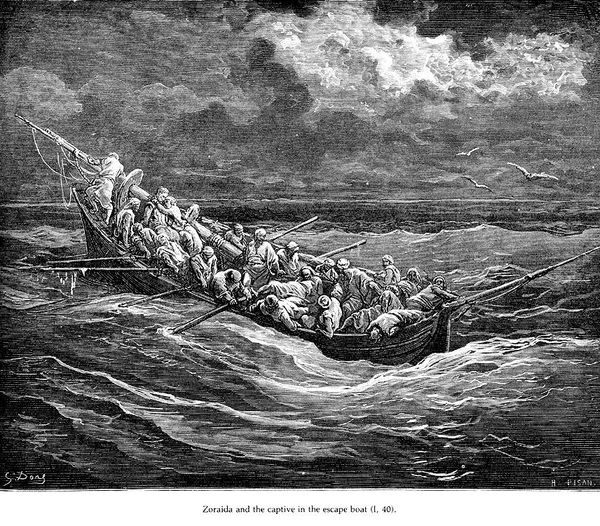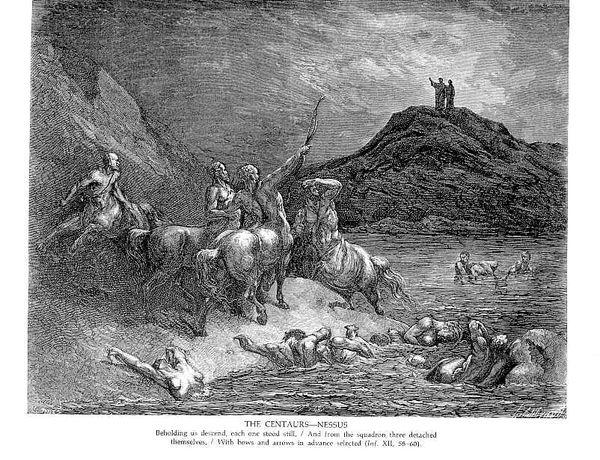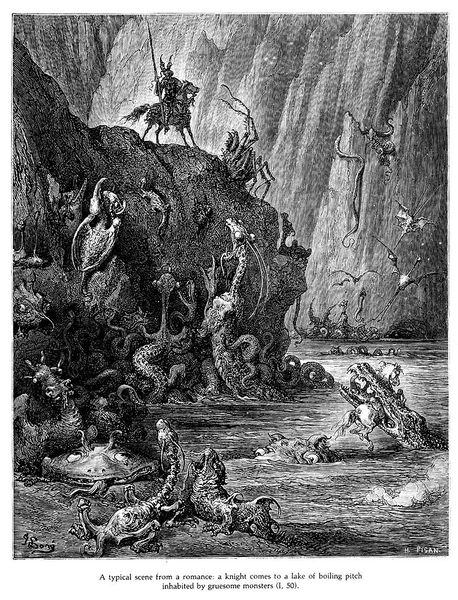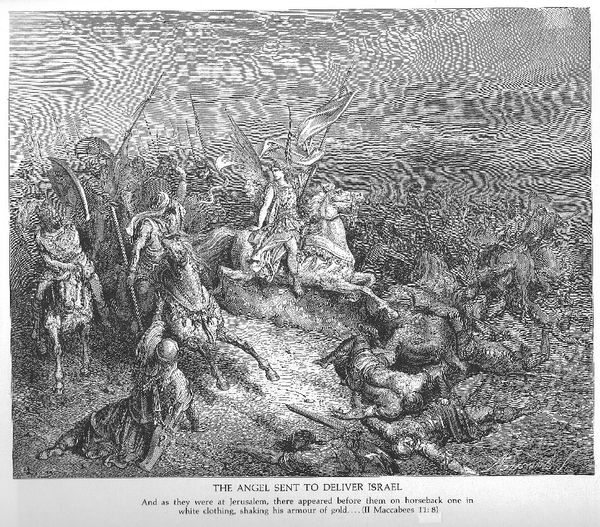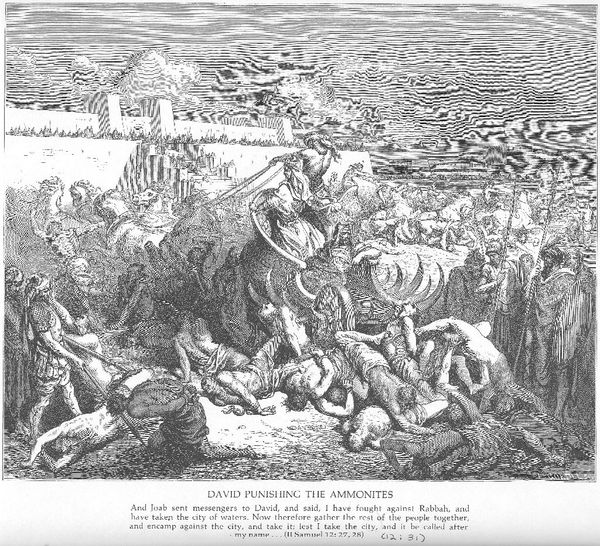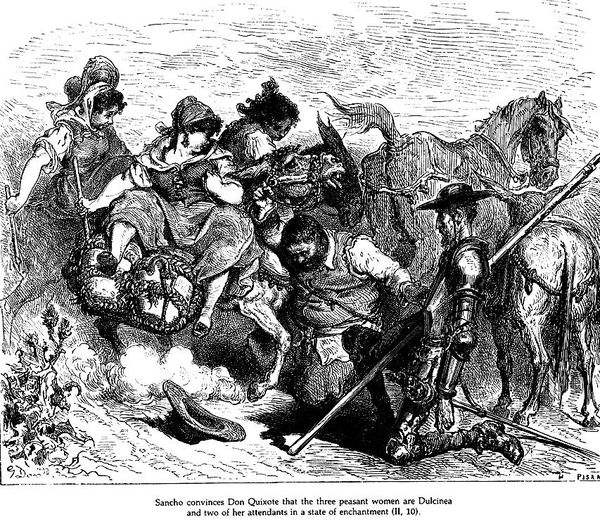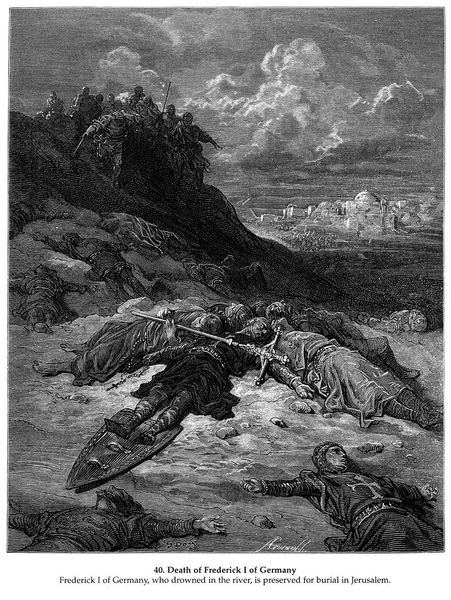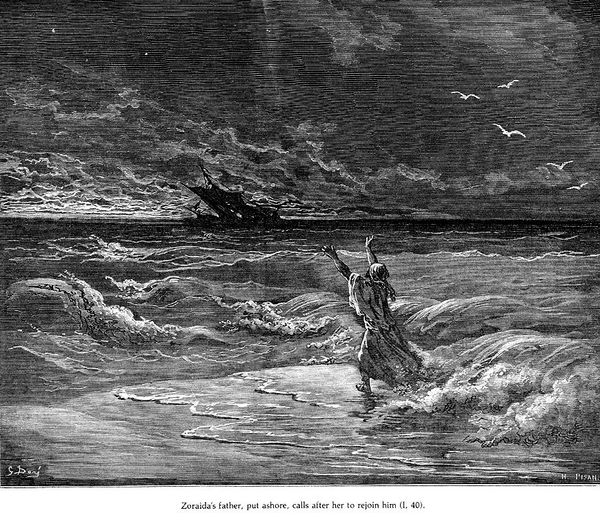
drawing, print, ink, engraving
#
drawing
#
medieval
#
narrative-art
# print
#
landscape
#
river
#
figuration
#
ink
#
water
#
line
#
engraving
Copyright: Public domain
Gustave Doré made this engraving of “The Styx--Phlegyas” in 19th-century France to illustrate Dante's *Inferno.* This image invites us to consider the role of art in representing complex moral and religious ideas, specifically in visualizing the horrors of hell. Doré worked during a time of significant social change in France, including the rise of industrialization and increasing secularization. These shifts challenged traditional religious beliefs. Here, Doré uses his skill in visual storytelling to bring Dante’s vivid imagery to life, shaping the viewer’s understanding of sin, punishment, and divine justice. The very act of illustrating a classic text places the artwork in an educational, institutional context, as it was meant to inform, interpret, and perhaps even challenge the audience. Art historians often study the political and religious context of Doré’s time, including the influence of academic art institutions on the topics artists chose to represent. By examining these cultural references, we can better understand how Doré’s "Styx" engages with and comments on the social structures of his time.
Comments
No comments
Be the first to comment and join the conversation on the ultimate creative platform.
